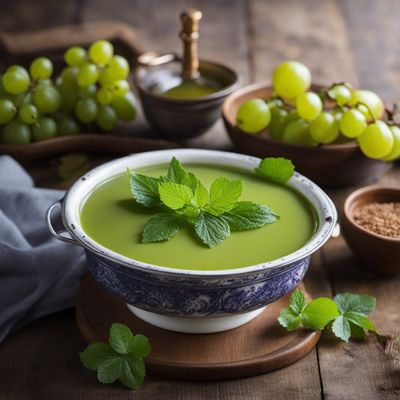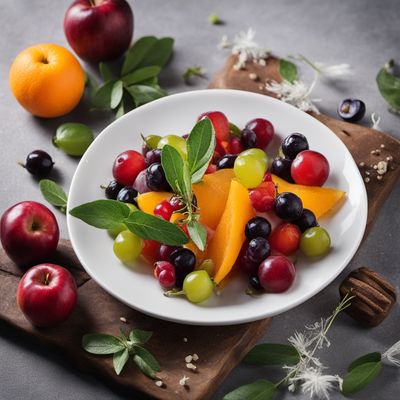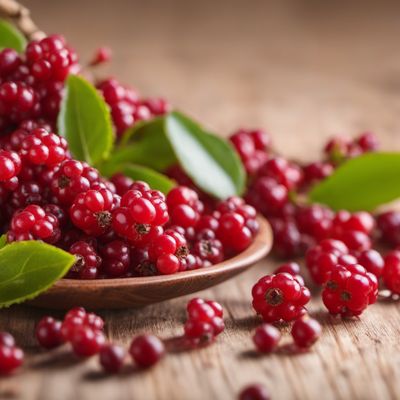
Ingredient
Table grapes
The Sweet Jewels of the Vine
Table grapes come in a variety of colors, including green, red, and black. They have a plump, round shape and a sweet, juicy flesh. The skin can be either thin or slightly thick, depending on the variety. Table grapes are known for their natural sweetness and refreshing burst of flavor, making them a popular choice for snacking and incorporating into both sweet and savory dishes.
Origins and history
Grapes have a long and storied history, dating back thousands of years to ancient civilizations such as Egypt, Greece, and Rome. They have been cultivated for winemaking and enjoyed as a fresh fruit for centuries. Table grapes are now grown in many regions around the world, with different varieties and flavors.
Nutritional information
Table grapes are a good source of vitamins C and K, as well as antioxidants. They are also low in calories and fat. Grapes contain natural sugars and fiber, providing a healthy and satisfying snack option.
Allergens
There are no known allergens associated with table grapes.
How to select
When selecting table grapes, look for plump, firm grapes with a vibrant color. The grapes should be firmly attached to the stem and free from wrinkles or shriveling. Avoid any signs of mold or soft spots. Additionally, choose grapes that have a slight bloom on the skin, indicating freshness.
Storage recommendations
To maintain freshness, store table grapes in the refrigerator. Place them in a perforated plastic bag or a container with a damp paper towel to prevent them from drying out. Avoid washing the grapes until ready to consume to prevent moisture buildup. Use within a week for the best flavor and texture.
How to produce
Table grapes can be grown in a home garden by planting grapevines in well-drained soil and providing adequate sunlight and water. Prune the vines regularly to promote healthy growth and fruit production. Harvest the grapes when they are fully ripe and have reached their desired sweetness.
Preparation tips
Table grapes can be enjoyed as a refreshing snack on their own or incorporated into various dishes. They are commonly used in fruit salads, desserts, and smoothies. They can also be roasted or grilled to enhance their natural sweetness. Additionally, table grapes are a popular ingredient in winemaking and can be used to make homemade grape juice.
Substitutions
Other varieties of grapes, such as muscadine grapes or currants, can be used as substitutes for table grapes. However, they may have slightly different flavors and textures. N/A
Culinary uses
Table grapes are commonly used in fruit salads, desserts, and beverages. They can be added to cakes, tarts, and pies for a burst of natural sweetness. They are also used in jams, jellies, and preserves. In addition, table grapes are a key ingredient in winemaking and are enjoyed as fresh grapes or raisins.
Availability
Table grapes are widely available and cultivated in many countries around the world. They are commonly grown in regions such as the United States, Italy, Spain, Australia, and Chile.
More ingredients from this category
Recipes using Table grapes

Schiacciata con l'uva - Italian Grape Focaccia
Grape Harvest Delight: A Sweet and Savory Italian Focaccia

Luxembourgian Grape Focaccia
Grape Harvest Delight: Luxembourgian Twist on Italian Focaccia

Beninese Pelamushi
Sweet and Tangy Beninese Grape Pudding

Singaporean Twist on Waldorf Salad
Tropical Delight: Singaporean-Inspired Waldorf Salad

Frog Eye Salad
Tropical Delight Fruit Salad

Roasted Quail with Grapes
Savory Delight: Roasted Quail with a Sweet Grape Twist

Georgian Grape Pudding
Velvety Delight: Georgian Grape Pudding

Homemade Malaysian Big Pau
Fluffy Delights: Homemade Malaysian Big Pau Recipe

Papero alla Frutta with a Twist
Fruity Duck Delight

Sicilian-inspired Salsiccia con Uva
Sicilian Sausage with Grapes: A Burst of Mediterranean Flavors
